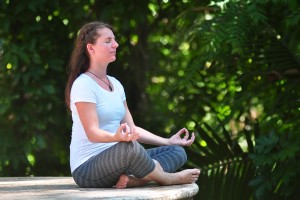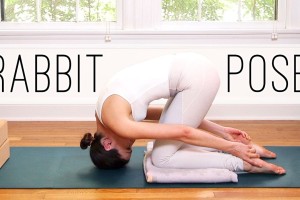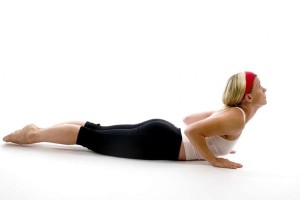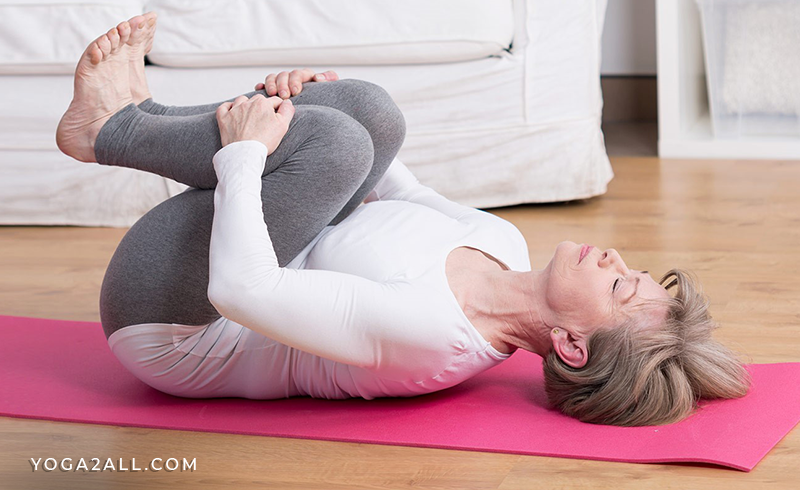
When one thinks of yoga, one envisions gentle restoration, flexibility, and balance control, all of which is blissfully accurate. However, when suffering from an underlying injury, yoga can aggravate the trauma, especially if you are not paying attention to your body and pushing yourself too hard. With that in mind, here are some poses you should be wary of when dealing with spinal trouble, approaching your practice with careful respect, and accepting that these postures may not be here for you at this time.
1. Camel Pose (Ustrasana)
It’s easy to see why the Camel can be taxing on your spine. As you lean into this position, you may feel your lower back stretching, which might complicate existing pain or disk issues. Ease yourself into this pose by using the shoulders to initiate the curve, pushing your chest up, and focusing on maintaining a long mid-back. Rest your hands on foam blocks for additional relief, and (as always) stop if you feel any pain whatsoever.

2. Upward Bow/Wheel Pose (Urdhva Dhanurasana)
As the Upward Bow places pressure on the spine and demand a lot of flexibility and strength, do not even consider attempting this pose if you are currently experiencing any back issues. Rather use a foam roller to loosen your back and find a comfortable place on your half bridge or half wheel poses until you’re all healed up.

3. Seated Forward Bend (Paschimottanasana)
While the Paschimottanasana may be great for your calves and hamstrings, this pose can curve your spine in such a way, that your vertebrae may slant at an awkward angle, hence why this seated position has been reported to pinch nerves and exacerbate disk problems. As before, be patient, and take it slow.
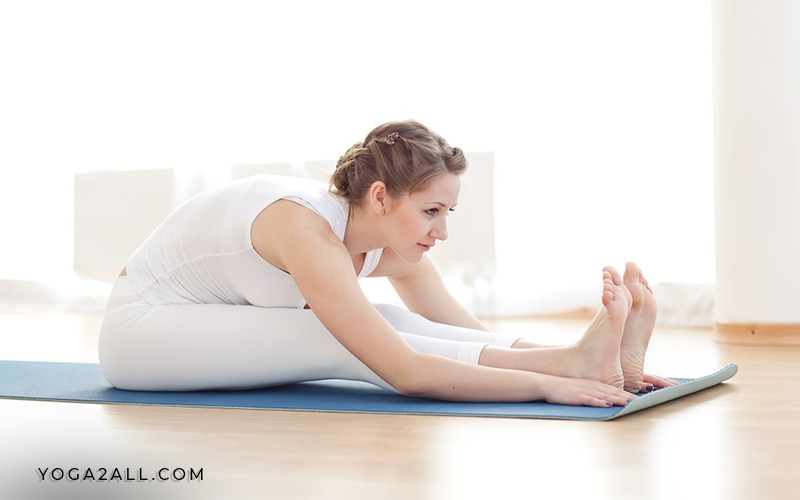
4. Standing Forward Bend (Uttanasana)
Much like the Paschimottanasana, the Uttanasana pose places a lot of compression on your lower back. When attempting this posture, be aware of your spine’s natural curve whilst you slightly bend your knees, distributing the stretch evenly between your hips, hamstrings, and lower back.

5. Supported Shoulderstand (Salamba Sarvangasana)
Without advanced abdominal strength, this pose can place a lot of additional pressure on your lower back and neck. As a result, one should never attempt the Supported Shoulderstand alone as a beginner and rather request an instructor to guide you through it, which will minimize any risks. Alternatively, you could alleviate the compression by using a wall to lean your legs upon.

6. Boat Pose (Paripurna Navasana)
If executed incorrectly, the Boat Pose can tilt the lower back into an uncomfortable position, and lead to spinal complications. Instead, experiment with different variations to discover your happy place, by bending your knees, focusing on your core, and centering yourself with the pelvis area. If all else fails, there is no shame in using a wall to develop your balance first.
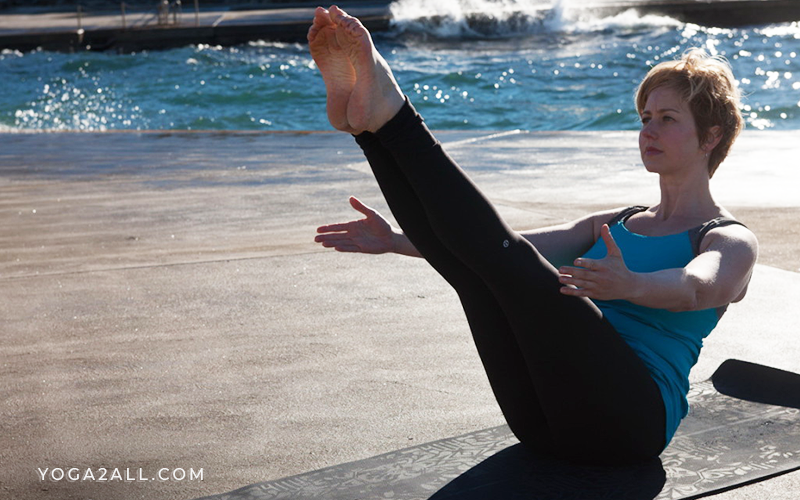
7. Cobra Pose (Bhujangasana)
The biggest concern surrounding the Cobra is that it’s very easy to overdo. By pushing down too hard with your hands, the arch of your spine can take a very unnatural shape (even if it might look impressive to outside observers). Test the role your hands were playing by occasionally lifting your palms off of the mat, then adjusting your mid back accordingly. Thankfully, when accomplished correctly, Bhujangasana can be very beneficial to your spine in the long run.

8. Triangle Pose (Trikonasana)
The sacrum (being the area just above the tailbone) is already a danger zone due to the modern practice of prolonged sitting, and so when you twist your frame with spread legs, you can induce sharp spinal pains, and develop a persistent backache. Approach this pose carefully, bringing your legs closer together and softly bending the knee, without worrying about the ankle grab if it’s not currently available to you.

9. Half Lord of the Fishes Pose (Ardha Matsyendrasana)
Ardha Matsyendrasana may appear harmless, but this twisting motion has been known to slightly tear the muscles surrounding the spine. This generally occurs when one exaggerates their rotation by pushing themselves too far with the elbow or hand, as this motion should be primarily handled by the core area alone. If you are currently suffering from any back related injuries, do not attempt this pose without speaking to your instructor first.

10. Warrior I Pose (Virabhadrasana I)
It’s the forceful lunge of a Warrior I which can throw your spine out, as many people incorrectly extend their lower back too fast for their frame to handle. Once again, your primary focus should be on your core, stabilizing yourself first, then using your abs to lengthen, maintaining a soft lower back. Like any of the poses previously mentioned, if you feel a pinch of pain, stop immediately.




